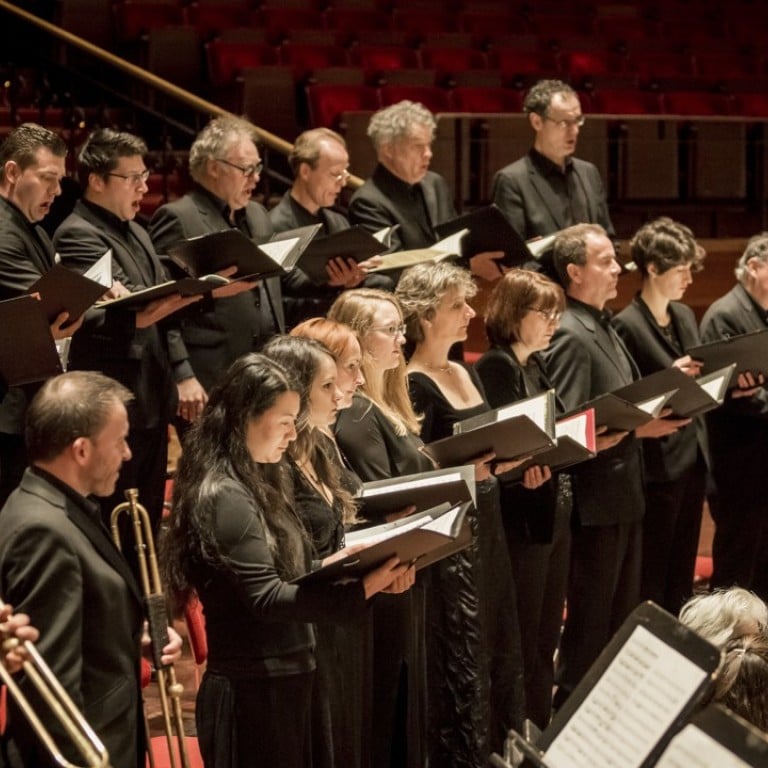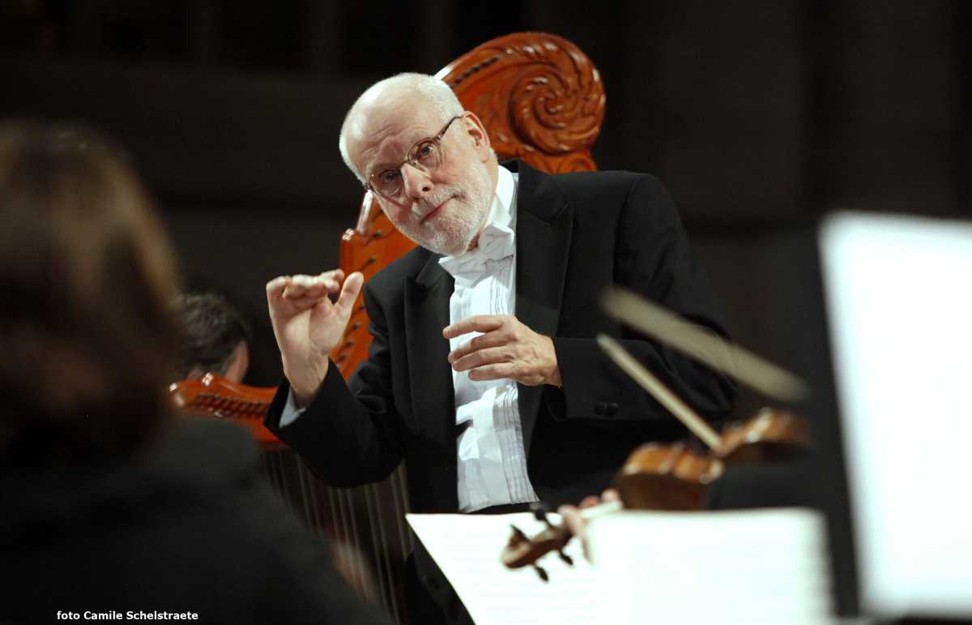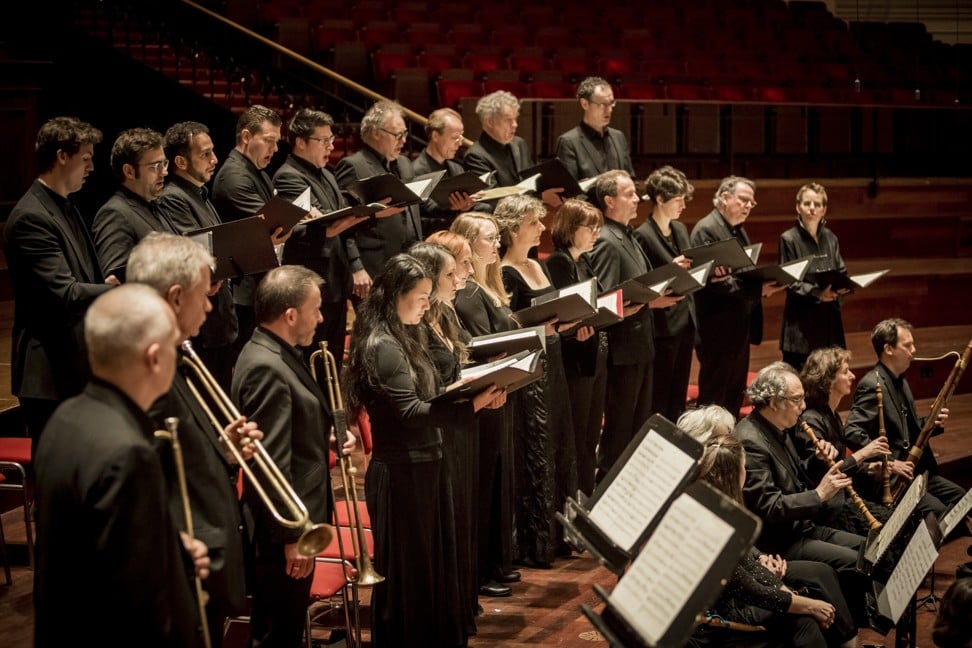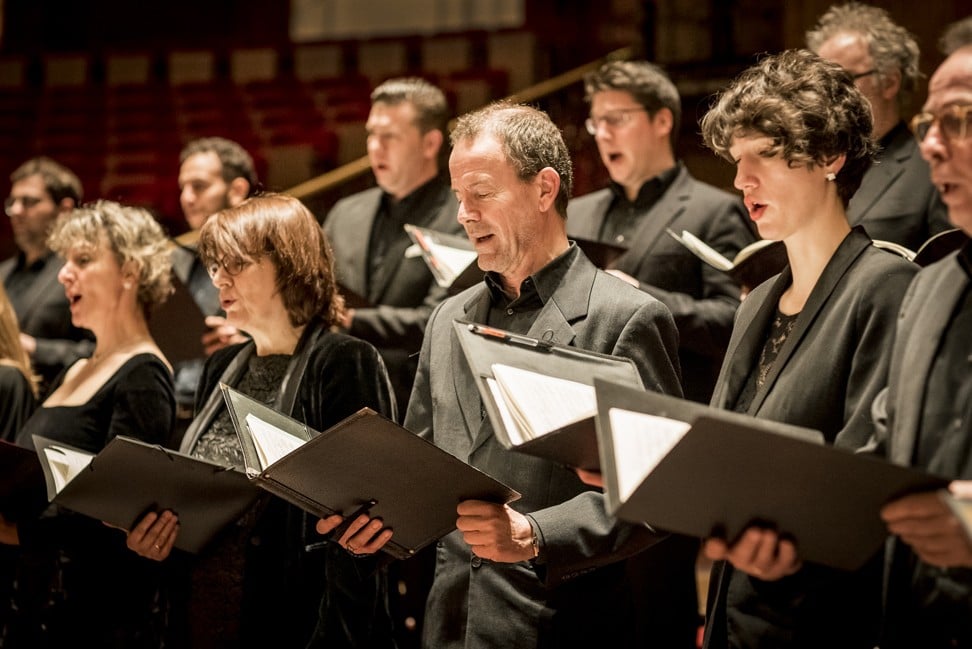
World-renowned early music specialist Ton Koopman and his Amsterdam Baroque Choir to treat Hong Kong to a musical feast
Ton Koopman and his Amsterdam Baroque Choir are performing in Hong Kong on May 29
The Baroque, that ornate, sometimes even extravagant, style of art, architecture and music, is something that most of us associate with past and distant glories. Indeed, the Baroque flourished in the early 17th to late 18th centuries in Europe, and the most well-known examples of Baroque architecture can be found in countries such as Italy, France, Germany, Austria and the Czech Republic. The façade of the Vatican City’s St Peter’s Basilica, and London’s St Paul’s Cathedral are two world-renowned examples of Baroque architecture.
But Baroque became more than just a European aesthetic – it was the first style to have a significant worldwide impact as it spread to the colonies and trading hotspots of Africa, Asia, and Central and South America. The façade of the ruins of St Paul’s in Macau are testament to how far the Baroque sensibility travelled.
“Baroque has reappeared at various times after it fizzled out at the beginning of the 18th century in Europe, giving way to the more lighthearted, decorative style we call the Rococo, and then to the strict and academic style called Neoclassicism,” says Professor Gauvin Alexander Bailey, bader chair in Southern Baroque Art at Queen’s University, Canada. “First of all, it lasted much longer in some places like Brazil and Macau than it did in Europe, well into the 19th century. But there were also lots of Baroque revivals: in the Victorian era, in the 1950s, even today in opulent hotel architecture – I recently stayed in a French Baroque-style hotel in Beijing.”
In Asia, Baroque architecture can mainly be found in Goa and Pondicherry in India, and in Malaysia, as well as in Macau.
Although there is huge variety among Baroque arts and architecture, there is a general tendency in the style toward heavy ornamentation, bright colours, depictions of extreme emotions, and opulence.
The style is concerned, above all else, with engaging the viewer’s emotions and using them for a variety of ends, such as conversion to Catholicism or submission to Absolutist monarchs, according to Bailey.
“Baroque was popular because it was a style made to engage with ordinary people and offered hope to them in a time of religious crisis [the Counter-Reformation] and warfare,” he says.
“Its brilliant colours, vivid stories, and general sumptuousness really attracted people on the street or in the countryside because the vision they offered was so different from the lives they lived.”
Unlike today, when we are bombarded with hundreds of images a day, the “average peasant in 17th-century Italy might have seen five or six paintings” in his or her life.
“It was a style for the masses, like the palace-like metro stations in Moscow or St Petersburg, a style which gave everyday men and women a glimpse of a life of glory, whether in today’s world or the afterlife,” Bailey says.
But while it’s original intentions may have been religious, Baroque was taken up purely as a style in places.
“Baroque was well received in Asia even among unconverted Asians, probably because its decorative nature and imagery made it a source of curiosity,” Bailey says.
This was certainly the case in China, where Baroque architecture was commissioned in Beijing by the Qianlong Emperor in the 18th century.

When it comes to music, while some genres of Baroque music are ornate and extravagant, the term “Baroque” applies primarily as a period indicator: the classical music composed between about 1600 and 1750.

The idea that instruments could drive compositional style, rather than merely serving as conduit for abstract musical lines, came into its own in the 17th century
“In the main, however, the most recognisable features of Baroque music have to do less with ornamentation and spectacle per se than the context or venues for which it was commissioned – whether church, court, or private homes – and the instruments employed, most recognisably, to the 21st-century ear, the church organ, the harpsichord and the viola da gamba.”
The most distinctive feature of Baroque music is the “basso continuo”, also referred to as “figured bass” due to the practice of notating it simply by adding numbers to the bass line to indicate the harmony. The basso continuo is an ensemble of one, two or more instruments whose role is to establish the tempo, support the texture, and suggest the harmony changes of any given piece.
Another major aspect of the music of the period is its international nature.
“Aristocrats and the church elites had an international outlook and shared musical resources, including, of course, the musicians themselves,” Biancorosso says. “Class and taste mattered more than nationality in creating musical networks.”
Demand for music in the Baroque era was very high due to the frequent need for music in both religious and civic rituals. There was an “ingrained conviction that music was an ennobling activity for members of the elite, which, too, fuelled the creation of chamber music – sonatas, suites, and all manner of keyboard music”, Biancorosso says.
Because of such high demand, particularly in urban centres, music was a viable career for many members of the lower classes and disadvantaged youngsters, such as the orphans for whom Vivaldi composed so many of his instrumental concertos. Opera stars could command very high figures and had a huge following, especially the famed castrati.
Opera, together with the solo concerto, are two major legacies of the Baroque period. Both genres originated in Italy but were further developed across western Europe, and beyond.
A more general characteristic of Baroque music that was to prove decisive for the development of Western classical music was the practice of writing specific kinds of musical lines or textures for specific instruments.
“The idea that instruments could drive compositional style, rather than merely serving as conduit for abstract musical lines, came into its own in the 17th century,” Biancorosso says.


As organist and harpsichordist, Koopman, born in Zwolle, the Netherlands, has appeared in the most prestigious concert halls of the world. He founded the Amsterdam Baroque Orchestra in 1979 and the Amsterdam Baroque Choir in 1992, respectively. Combined as the Amsterdam Baroque Orchestra & Choir, the ensemble has gained worldwide acclaim as one of the best troupes on period instruments, with a repertoire ranging from early Baroque to the late Classics.
One of Koopman’s most ambitious projects has been the recording of the complete Bach cantatas, and the massive undertaking has earned him the Deutsche Schallplattenpreis “Echo Klassik”, the BBC Award, the Prix Hector Berlioz and nominations for the Grammy and the Gramophone Awards.
The choir will be singing works by Bach and Brahms. In the Bach repertoire will be three motets (sacred choral, usually unaccompanied, compositions), including the grand Jesu, meine Freude, BWV 227, which consists of 11 sections laid out in symmetrical fashion. They will also be singing Singet dem Herrn ein neues Lied, BWV 225, and Der Geist hilft unser Schwachheit auf, BWV 226.
The works by Brahms, a later, Romantic composer, will include four secular songs. The works will be accompanied by Shanghainese pianist Jane Xie.

